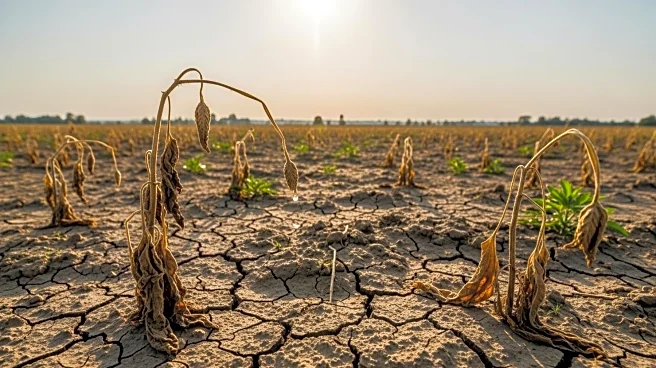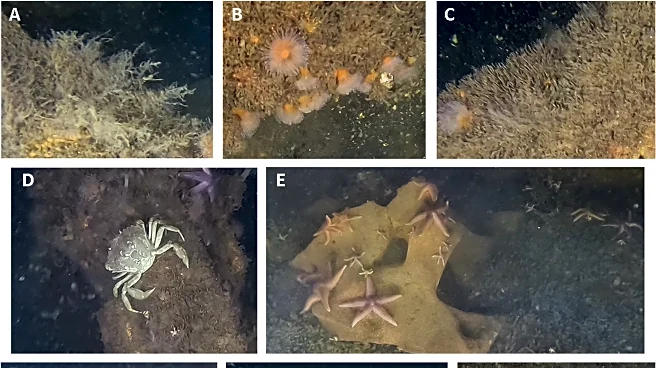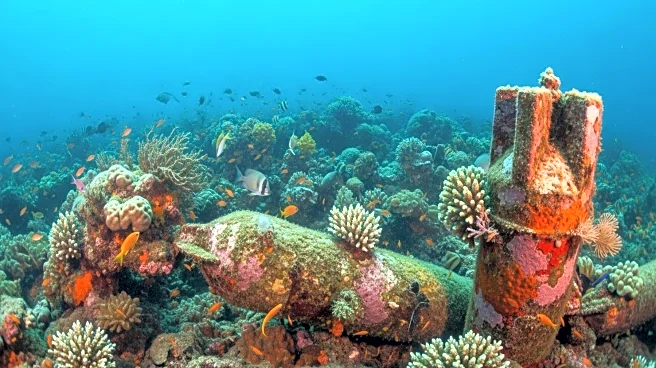What's Happening?
A recent study led by paleontologist Rab Smyth has solved a long-standing mystery regarding the mass mortality of pterosaurs in the Solnhofen Limestones of Germany. The research uncovered two Pterodactylus antiquus hatchlings with wing fractures, indicating they were victims of tropical storms that swept through the area 150 million years ago. These storms caused the young pterosaurs to drown and be rapidly buried in lagoon sediments, preserving their remains. The study, published in Current Biology, highlights the role of catastrophic events in the preservation of ancient species.
Why It's Important?
This discovery provides valuable insights into the environmental conditions and challenges faced by prehistoric species. Understanding how natural disasters impacted ancient ecosystems can inform current studies on climate change and its effects on biodiversity. The findings also contribute to the field of paleontology by demonstrating the importance of exceptional preservation sites like Solnhofen in reconstructing the history of life on Earth.
Beyond the Headlines
The study raises questions about the preservation of juvenile versus adult pterosaurs, as the fragile bones of the young were more likely to be preserved than those of larger, more robust adults. This could lead to further research on fossilization processes and the factors that contribute to the preservation of delicate structures. Additionally, the discovery emphasizes the need to consider environmental factors in the study of ancient life, which can offer parallels to modern ecological challenges.












